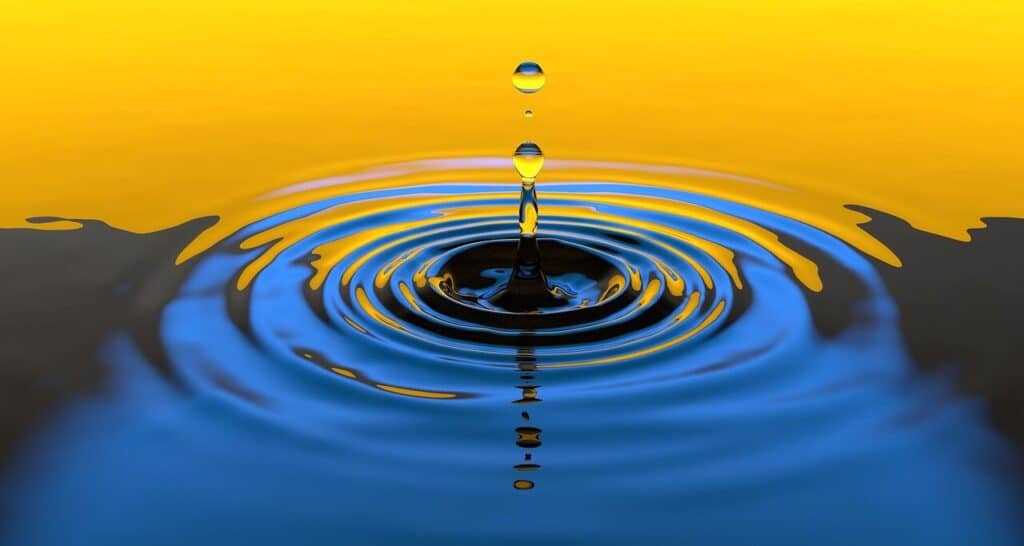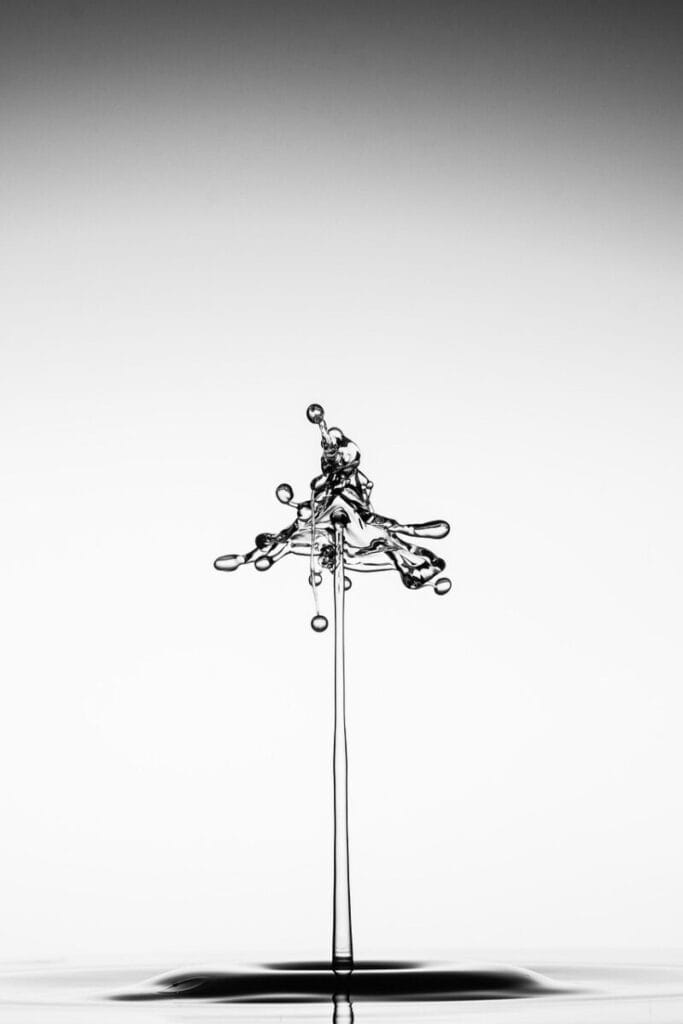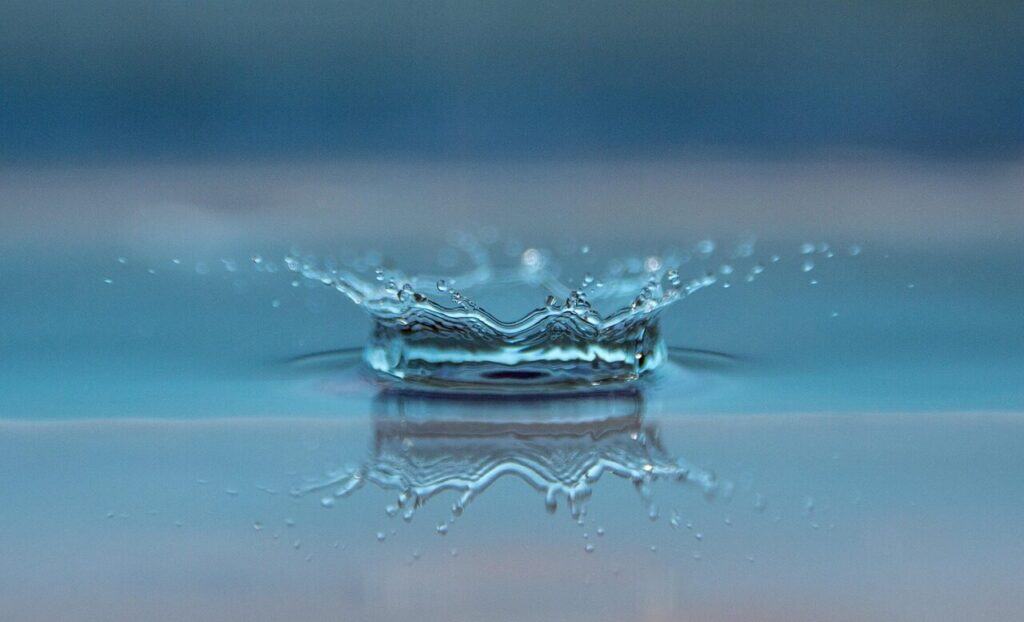Desbloquear el rendimiento de los materiales
La vida útil de un componente rara vez viene determinada por sus propiedades a granel. Los fallos casi siempre empiezan en la superficie. Aquí es donde el producto se encuentra con su entorno operativo.
La corrosión, el desgaste, la fatiga y la fricción comienzan en la superficie. Si los controla, controlará la fiabilidad y el rendimiento.
Este análisis va más allá de la simple enumeración de opciones de tratamiento de superficies. Exploraremos la ciencia subyacente que rige el funcionamiento de estos tratamientos. Nos centramos en el "cómo" y el "por qué" fundamentales.
Desglosaremos la ingeniería de superficies en sus enfoques básicos. Nos centramos principalmente en los procesos aditivos, que construyen nuevas capas, y en los procesos alterativos, que transforman la superficie existente. La comprensión de estos principios desbloquea el potencial de un material. verdadero potencial.
Conceptos científicos fundamentales
Antes de analizar procesos específicos, necesitamos un lenguaje común de conceptos científicos básicos. Estos principios son los elementos básicos que rigen la eficacia de cualquier tratamiento de superficies. Proporcionan las herramientas mentales necesarias para comprender los mecanismos que analizaremos más adelante.
Energía, humectabilidad y adherencia
Toda superficie tiene un exceso de energía en comparación con el material a granel. Es la energía superficial. Existe porque los átomos de la superficie no están completamente enlazados como sus homólogos dentro del material. Esto les da un impulso energético para unirse a cualquier cosa que los toque.
Esta energía influye directamente en la humectabilidad. La humectabilidad es la capacidad de un líquido para mantener el contacto con una superficie sólida. Se mide con el ángulo de contacto. Un ángulo de contacto bajo significa una humectabilidad elevada. Esto significa que un líquido (como la pintura o la solución de revestimiento) se extiende fácilmente, lo que es crucial para un revestimiento uniforme.
El objetivo es lograr una fuerte adhesión entre el tratamiento y el sustrato. Esto ocurre a través de uno o varios de los cuatro mecanismos principales:
- Enclavamiento mecánico: Se trata del encaje físico de un revestimiento en los picos y valles microscópicos de un sustrato rugoso. Es como un velcro microscópico.
- Adhesión química: Es la forma de adhesión más fuerte. Los enlaces covalentes, iónicos o metálicos se forman directamente en la interfaz, creando una estructura única y unificada.
- Adhesión dispersiva: También conocidas como fuerzas de van der Waals, implican débiles atracciones intermoleculares entre las moléculas del revestimiento y del sustrato. Aunque individualmente débiles, estas fuerzas son significativas colectivamente.
- Adhesión electrostática: Se produce cuando se forma una doble capa eléctrica en la interfaz. Crea una fuerza de atracción similar a la adherencia estática.
Corrosión y pasivación
La corrosión es un proceso electroquímico. Requiere un ánodo (donde se pierde el metal), un cátodo (donde se produce una reacción de reducción) y un electrolito (un medio conductor, como la humedad). Así se crea una célula galvánica en miniatura que disuelve el material.
Muchos tratamientos superficiales para la resistencia a la corrosión funcionan con pasivación. La pasivación forma una capa muy fina, estable y no reactiva en la superficie del material. Actúa como una barrera que impide las reacciones electroquímicas de la corrosión.
La relación Pilling-Bedworth (PBR) puede predecir a menudo la eficacia de una capa de óxido pasiva. Esta relación compara el volumen de la capa de óxido con el volumen de metal consumido para crearla. Un PBR entre 1 y 2 indica generalmente una capa pasiva densa, no porosa y protectora. Se adherirá bien y detendrá la corrosión.
Microestructura del material
Un sustrato no es un lienzo uniforme e inerte. Su microestructura -la disposición de sus granos, la presencia de diferentes fases y los defectos inherentes- desempeña un papel fundamental en la aceptación de un tratamiento de superficie.
La eficacia del tratamiento puede variar en función de su interacción con la estructura de grano del sustrato. Los límites de grano, por ejemplo, son regiones de alta energía que pueden ser más reactivas o facilitar una difusión más rápida. Del mismo modo, la orientación cristalográfica de los granos superficiales puede influir en el crecimiento y la adhesión de una película depositada.
Procesos aditivos
Los procesos aditivos mejoran el rendimiento construyendo una nueva capa funcional de material sobre el sustrato. Esta nueva capa tiene propiedades de las que carece el material original. A continuación examinaremos la ciencia que rige la construcción de estas capas, átomo a átomo o ion a ion.
Deposición electroquímica
Las leyes de Faraday de la electrólisis rigen esta familia de procesos. Estas leyes proporcionan una relación cuantitativa entre la cantidad de corriente eléctrica que pasa a través de una solución y la masa de material depositada en una pieza.
El mecanismo comienza con la disociación de las sales metálicas en iones metálicos positivos (cationes) e iones negativos (aniones) dentro de un baño electrolítico. Cuando se aplica corriente continua, la pieza se convierte en el cátodo (electrodo negativo).
Los iones metálicos cargados positivamente migran a través de la solución hacia el cátodo. Al llegar a la pieza, ganan electrones y se reducen de nuevo a su estado metálico. Se depositan sobre la superficie en forma de una capa fina y uniforme.
Describe la galvanoplastia, utilizada para materiales como el cromo, el níquel y el zinc. Una variante clave es el galvanizado químico. Este proceso es autocatalítico y no requiere corriente eléctrica externa. En su lugar, un agente químico reductor dentro del baño de revestimiento proporciona los electrones necesarios para reducir los iones metálicos en la superficie del sustrato.
Procesos de deposición de vapor
Las técnicas de deposición de vapor crean películas de alto rendimiento mediante la transición del material de una fase gaseosa a una película sólida sobre el sustrato. Esto suele ocurrir en el vacío.
Deposición física de vapor (PVD)
El principio básico del PVD es la generación de vapor por medios puramente físicos. Esto ocurre en un entorno de alto vacío. Esto garantiza que los átomos vaporizados puedan desplazarse hasta el sustrato sin chocar con las moléculas de aire.
El mecanismo se divide en tres etapas distintas:
- Generación: El vapor se crea a partir de un material fuente sólido, o "blanco". Esto suele ocurrir mediante pulverización catódica, en la que el objetivo es bombardeado con iones de alta energía (normalmente argón), desprendiendo átomos. Alternativamente, la evaporación térmica utiliza calor intenso para hervir y vaporizar el material fuente.
- Transporte: Los átomos o moléculas liberados viajan en línea recta a través de la cámara de vacío desde la fuente hasta el sustrato.
- Deposición: A su llegada, los átomos se condensan en la superficie del sustrato. Forman sitios de nucleación iniciales y luego crecen hasta formar una película continua y densa.
Un problema común en PVD es el "efecto sombra" causado por este transporte en la línea de visión. Las geometrías o características complejas pueden bloquear la trayectoria del vapor. Esto da lugar a espesores de recubrimiento no uniformes. En la práctica, esto se mitiga montando las piezas en complejos dispositivos giratorios. Estos cambian continuamente su orientación con respecto a la fuente, garantizando que todas las superficies se recubran uniformemente.
Deposición química en fase vapor (CVD)
El principio del CVD es fundamentalmente diferente. Consiste en una reacción química de gases precursores directamente sobre la superficie de un sustrato calentado. El resultado es la deposición de una película sólida.
El mecanismo del CVD es una secuencia de acontecimientos. En primer lugar, se introducen en una cámara de reacción gases precursores volátiles que contienen los elementos necesarios. Estos gases se difunden hacia el sustrato calentado.
A continuación, las moléculas de gas se adsorben en la superficie caliente. La energía térmica del sustrato impulsa una reacción química. Esto descompone las moléculas precursoras y deposita el material sólido deseado. Los subproductos gaseosos de la reacción se desorben de la superficie y se bombean fuera de la cámara. Temperatura de proceso y la presión son los parámetros críticos de control.
Cuadro 1: PVD frente a CVD
Característica | Deposición física de vapor (PVD) | Deposición química en fase vapor (CVD) |
Principio básico | Proceso físico: Pulverización catódica o evaporación de una fuente sólida en el vacío. | Proceso químico: Reacción de gases precursores sobre una superficie calentada. |
Temperatura de proceso | Relativamente bajo (50 - 600°C) | Típicamente alta (600 - 2000°C), con algunas variantes de menor temperatura (PECVD). |
Adherencia de la película | Buena, puede mejorarse con bombardeo iónico. | Excelente, debido a la unión química y a la difusión a altas temperaturas. |
Recubrimientos típicos | TiN, CrN, AlTiN (revestimientos duros), Al, Cu (metalización) | Diamante, carburo de silicio, carburo de wolframio, nitruro de silicio |
Sustrato Limitación | Gama más amplia de materiales, incluidos algunos plásticos y aleaciones sensibles a la temperatura. | Limitado a materiales que puedan soportar altas temperaturas. |
Conformidad | Línea de visión, deficiente en geometrías complejas sin rotación. | Excelente, recubre uniformemente formas complejas. |
Alteración de la superficie
En lugar de añadir una nueva capa, los procesos de alteración cambian fundamentalmente la química o la microestructura de la superficie existente. Estos tratamientos transforman la propia piel del material para crear las características de rendimiento deseadas.
Difusión térmica y termoquímica
Estos procesos se rigen por la difusión a alta temperatura, descrita por las leyes de Fick. La fuerza motriz es un gradiente de concentración. Los elementos se desplazan de forma natural desde zonas de alta concentración (la atmósfera del horno) a zonas de baja concentración (el sustrato).
Un ejemplo clásico es la cementación del acero. La pieza de acero se calienta a alta temperatura en una atmósfera rica en carbono. A esta temperatura, la estructura cristalina del acero es austenítica. Esto tiene una alta solubilidad para el carbono.
Los átomos de carbono se difunden desde la atmósfera hacia los sitios intersticiales de la red de hierro. Transcurrido un tiempo suficiente, la pieza se enfría. Este rápido enfriamiento transforma la capa superficial de alto contenido en carbono en martensita extremadamente dura. El núcleo de bajo contenido en carbono sigue siendo resistente y dúctil.
La nitruración funciona según un principio similar. Los átomos de nitrógeno se difunden en la superficie de una pieza de acero. En lugar de permanecer en solución, el nitrógeno reacciona con el hierro y otros elementos de aleación. Esto forma una capa muy dura y estable de compuestos de nitruro metálico (como Fe₃N) directamente en la superficie. Esto proporciona una resistencia excepcional al desgaste y la corrosión.
Tratamientos mecánicos
Los tratamientos mecánicos mejoran el rendimiento induciendo una tensión residual de compresión beneficiosa en la capa superficial. Esto ocurre a través de la deformación plástica localizada.
El ejemplo más común es el granallado. En este proceso, la superficie de un componente se bombardea con un chorro a alta velocidad de pequeñas bolas esféricas (granalla).
Cada partícula de granalla actúa como un pequeño martillo de granallado. Crea un pequeño hoyuelo en la superficie. El material situado justo debajo de este hoyuelo se deforma plásticamente. Intenta empujar contra el material circundante no deformado.
Esta acción crea una capa uniforme de alta tensión residual de compresión. Las grietas por fatiga no pueden iniciarse o propagarse fácilmente en una capa comprimida. Esto mejora drásticamente la vida a fatiga del componente.
Para garantizar la coherencia del proceso, utilizamos tiras Almen como control de calidad. Se trata de flejes de acero normalizados que se someten a granallado junto con las piezas. La intensidad del proceso de granallado se mide por el grado de curvatura de estas tiras. Esto proporciona un método fiable y repetible para control del proceso.
Cuadro 2: Métodos de alteración de la superficie
Método | Principio científico subyacente | Parámetros clave del proceso | Efecto de rendimiento primario |
Carburación | Difusión intersticial de carbono a alta temperatura. | Temperatura, tiempo, potencial de carbono | Extrema dureza superficial, buena resistencia al desgaste. |
Nitruración | Difusión a alta temperatura y reacción química del nitrógeno. | Temperatura, tiempo, fuente de nitrógeno | Elevada dureza superficial, excelente resistencia a la corrosión y al desgaste. |
Granallado | Deformación plástica localizada y endurecimiento por deformación. | Tamaño/material del disparo, Velocidad, Cobertura | Induce una tensión residual de compresión, dramáticamente mejora la vida a la fatiga. |
Revestimiento de conversión | Reacción química o electroquímica controlada con el sustrato. | Composición química, pH, Temperatura | Resistencia a la corrosión, mejor adherencia de la pintura. |
Un marco basado en principios
Comprender la ciencia es el primer paso. Aplicarla para tomar decisiones óptimas de ingeniería es el verdadero objetivo. Seleccionar un tratamiento superficial no consiste en elegir de una lista. Es un proceso sistemático de sopesar factores contrapuestos.
El triángulo crítico
El tratamiento de superficie óptimo se encuentra en la intersección de tres factores críticos: el sustrato, el proceso y la propiedad deseada. La elección no puede hacerse de forma aislada.
- Material del sustrato: El material de base determina qué procesos son posibles. Su punto de fusión, dureza, estabilidad térmica y reactividad química son las principales limitaciones. Por ejemplo, no se puede utilizar un proceso CVD de alta temperatura en un polímero de bajo punto de fusión.
- Limitaciones del proceso: Cada proceso tiene características inherentes que limitan su aplicación. El PVD es un proceso en línea recta. Esto dificulta su aplicación en geometrías internas complejas. Los procesos de difusión a alta temperatura pueden provocar distorsiones térmicas en piezas de precisión.
- Propiedad final deseada: Este es el factor principal. La función que debe desempeñar la superficie, ya sea resistencia al desgaste, resistencia a la corrosión o mejora de la vida a fatiga, orienta la selección inicial hacia los principios que pueden lograr ese resultado.
Estudio de caso: Árbol de levas de automoción
Recorramos el proceso de selección de un árbol de levas de automoción de alto rendimiento. Este componente está sometido a una tensión extrema.
Paso 1: Definir los requisitos
Las principales necesidades son una resistencia al desgaste muy alta en los lóbulos de la leva, una fatiga excepcional resistencia a las cargas de flexióny buena lubricidad. El sustrato es una aleación de acero forjado.
Paso 2: Analizar las opciones en función de los principios
Evaluamos los posibles tratamientos teniendo en cuenta los principios que los sustentan:
- Cromado duro (aditivo): Proporciona una excelente resistencia al desgaste. Sin embargo, el propio proceso de cromado puede inducir tensiones de tracción y conlleva un riesgo de fragilización por hidrógeno. Ambos pueden reducir significativamente la vida a fatiga del componente.
- Recubrimiento PVD (por ejemplo, DLC) (aditivo): Un recubrimiento de carbono similar al diamante ofrece una resistencia superior al desgaste y una fricción muy baja. Sin embargo, garantizar una adherencia perfecta sobre una forma compleja sometida a una gran tensión de contacto es un reto importante. Además, el coste del proceso es considerable.
- Endurecimiento por inducción (alteración): Este proceso utiliza la inducción electromagnética para calentar rápidamente sólo la superficie de los lóbulos de la leva, que luego se templan. Esto transforma la superficie en martensita dura (para la resistencia al desgaste) y crea simultáneamente una capa beneficiosa de tensión de compresión (para la resistencia a la fatiga).
Paso 3: Justificar la selección
Basándose en estos principios, el temple por inducción es una opción excepcional. Se trata de un proceso alternativo que modifica el propio material base para conseguir las dos propiedades más críticas -dureza para el desgaste y tensión de compresión para la fatiga- en una sola operación eficaz. Ofrece una solución de ingeniería robusta, fiable y rentable adaptada a los principales modos de fallo del componente.
Cuadro 3: Matriz de decisiones
Propiedad deseada | Principio rector | Tratamientos para los mejores candidatos | Consideraciones clave |
Dureza extrema / Resistencia al desgaste | Formación de compuestos duros (carburos, nitruros) o deposición de capas cerámicas. | Carburación, nitruración, PVD (p. ej., TiN, AlTiN), CVD (p. ej., diamante) | Temperatura del proceso, espesor del revestimiento, fragilidad. |
Mejora de la resistencia a la fatiga | Inducción de altas tensiones residuales de compresión. | GranalladoGranallado por láser, endurecimiento por inducción | Geometría del componente, material, nivel de tensión deseado. |
Resistencia a la corrosión | Formación de una capa pasiva/inerte o de un revestimiento de barrera. | Anodizado (para Al), Níquel Químico, Recubrimientos de Conversión, Recubrimientos Poliméricos | Entorno operativo (pH, temperatura), necesidad de conductividad. |
Baja fricción (lubricidad) | Deposición de materiales de baja resistencia al cizallamiento o estructuras cristalinas específicas. | Recubrimientos PVD (por ejemplo, DLC, MoS₂), PTFE (teflón). | Capacidad de carga, temperatura de funcionamiento, adherencia. |
Biocompatibilidad | Creación de una superficie bioinerte o bioactiva. | PVD (nitruro de titanio), anodizado (para Ti), revestimientos de hidroxiapatita | Interacción con fluidos corporales, método de esterilización. |
El horizonte
El campo de la ingeniería de superficies evoluciona constantemente. Surgen nuevas tecnologías basadas en principios científicos aún más avanzados. Estar al tanto de estas tendencias es crucial para la innovación futura.
- Deposición de capas atómicas (ALD): Este proceso se basa en el principio de las reacciones superficiales autolimitadas y secuenciales. Permite la deposición de una capa atómica cada vez. Esto proporciona una precisión, una conformidad y un control del espesor sin precedentes, incluso en las estructuras 3D más complejas.
- Recubrimientos de aleación de alta entropía (HEA): Estos recubrimientos se basan en el uso de múltiples elementos primarios en proporciones atómicas casi iguales. Esto altera la formación de estructuras cristalinas simples, dando lugar a materiales con combinaciones de propiedades sin precedentes. Por ejemplo, algunos revestimientos HEA presentan una relación resistencia-peso superior a la de las superaleaciones tradicionales.
- Superficies biomiméticas: Este enfoque se basa en imitar diseños funcionales de la naturaleza. Reproduciendo las micro y nanoestructuras de una hoja de loto, por ejemplo, podemos crear superficies superhidrófobas que se limpian solas. Del mismo modo, imitando la piel de tiburón podemos crear superficies que reduzcan la resistencia de los fluidos.
De los principios al rendimiento
Conocer a fondo los principios científicos que subyacen al tratamiento de superficies no es un ejercicio académico. Es la herramienta más poderosa ingeniero o diseñador posee para crear productos que sean duraderos, fiables y rindan al máximo.
Hemos pasado de los fundamentos de la adhesión y la corrosión a los complejos mecanismos de la deposición y la difusión. Por último, hemos llegado a un marco de selección inteligente. La lección principal sigue siendo la misma.
El rendimiento de todo un sistema se define a menudo por la física y la química que tienen lugar en los primeros nanómetros de su superficie. Si dominamos estos principios, podremos diseñar superficies que no solo soporten su entorno, sino que lo dominen.
- Ciencia de los materiales e ingeniería de superficies - ASM International https://www.asminternational.org/
- Tratamiento de superficies y revestimientos - NIST https://www.nist.gov/
- Corrosión y protección de superficies - NACE International (AMPP) https://www.ampp.org/
- Ingeniería de superficies - Wikipedia https://en.wikipedia.org/wiki/Surface_engineering
- Procesado y tratamiento de materiales - ASTM International https://www.astm.org/
- Ingeniería mecánica y tratamientos superficiales - ASME https://www.asme.org/
- Investigación en Ciencia de Materiales - ScienceDirect https://www.sciencedirect.com/topics/materials-science/surface-treatment
- Fabricación y tratamiento de superficies - PYME https://www.sme.org/
- Tratamiento industrial de superficies - Thomasnet https://www.thomasnet.com/
- Formación en ingeniería de materiales - MIT OpenCourseWare https://ocw.mit.edu/









